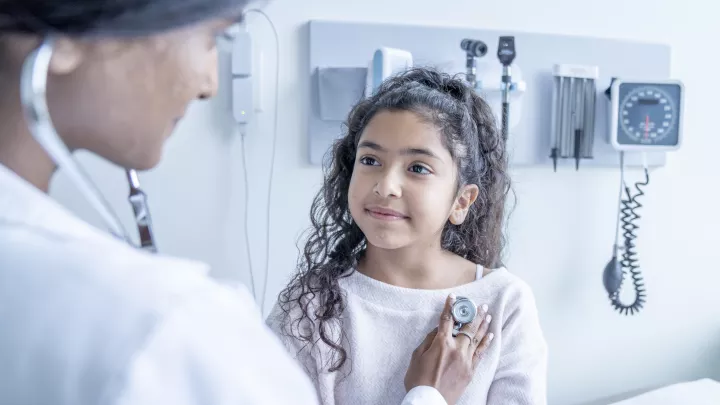
Pandemic Weight Gain in Kids Influenced by Family Income
The stress, lack of exercise and poor nutrition resulting from the disruption and isolation of the pandemic shutdown led many children and adolescents to gain excess weight. But weight gain was greatest in low-income youth who already were disproportionately affected by obesity.
In a research letter published in JAMA Pediatrics, investigators at Children’s Hospital Los Angeles found that excess weight gain in adolescents during the pandemic was linked to family income. Adolescents from low-income families gained more weight than youth from more affluent families, with girls gaining more than boys.
Highest weight gain in lowest-income kids
“We look at pandemic weight gain as a function of socioeconomic status,” says Elizabeth Sowell, PhD, an investigator in the Division of Neurology in the Department of Pediatrics of Children’s Hospital Los Angeles and corresponding author on the letter. “We know from watching the news over the past three years that lower income families were hit much, much harder by the pandemic than their wealthier counterparts.”

These results were found in children participating in the National Institutes of Health-sponsored Adolescent Brain Cognitive Development (ABCD) Study, the largest long-term study of brain development and child health in the United States. In the ABCD Study, a national consortium of researchers has been following over 11,000 children from ages 9 or 10 until they turn 19 or 20, regularly measuring their height and weight and conducting brain scans and cognitive assessments every other year. Participants’ family income is also recorded.
“Of those 11,000 kids, we followed about 400 families at CHLA,” says Dr. Sowell, who is also Professor of Pediatrics at the Keck School of Medicine of USC. “Most of this sample population is very low-income Hispanic families—which is important because they are typically reticent to enroll in long-term research. We are grateful that they agreed to participate in this study.”
Hidden pandemic impacts
“The CHLA team realized that the ABCD Study could also provide a unique window into the pandemic’s hidden impacts on a large, diverse group of children. “These kids happened to be recruited between 2016 and 2018, before the pandemic, and that's important to note,” says Dr. Sowell. “Roughly a third (1,095 youth) had their second baseline assessment after the pandemic started—so what we had was a natural experiment.”
The researchers compared the weight gain of participants whose one-year and two-year follow-up assessments were conducted before March 2020 to the weight gain of another group of participants whose two-year follow-up occurred after the COVID-19 shut down. The group of girls assessed during the pandemic gained an average of about 15 pounds/year —11.2% more than the cohort of girls assessed pre-pandemic, who gained 13.4 pounds/year. In boys, average weight gain increased by almost 16% between the groups assessed before and during the pandemic.
While the rate of weight gain during the pandemic of girls from wealthier families was similar to before the pandemic, the researchers found that girls from low-income families gained the most weight during the COVID-19 shutdown; they experienced an accelerated average 3.4-pound (24%) weight gain.
Long-term effects still unknown
“While it's normal for this age group to grow and gain weight, in this study we will be able to follow these kids over time to see if the excess pandemic weight gain has lasting effects,” says Dr. Sowell.
The researchers will track this group of children until the ages of 19 or 20, as ABCD study funding is currently guaranteed through 2027, although they hope the study will continue beyond that point. The entire study cohort of 11,000 youth is now undergoing their sixth-year assessment, including brain imaging and another set of weight/height measures to calculate body mass index.
“We are also evaluating whether the group followed during the pandemic has changes or differences in brain maturation, as well as behaviors like anxiety and depression,” says Dr. Sowell.
Samantha Betts, a graduate student in Dr. Sowell’s laboratory at CHLA, was first author of the study. Co-investigators included Shana Adise, PhD, of CHLA; Panteha Hayati Rezvan, PhD, of The Saban Research Institute of CHLA; and Andrew T. Marshall, PhD, Eric Kan, BS, and David L. Johnson, MA, of CHLA. Dr. Sowell received funding from the National Institutes of Health for the study. Dr. Adise received additional NIH funding from the National Institute of Diabetes and Digestive Diseases.


